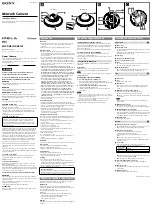
3Com Switch 8800 Configuration Guide
Chapter 37 BGP/MPLS VPN Configuration
37-5
RD
IPv4 address
...
ERT1
ERT2
...
ERTn
ERT: Export Route Targets
Import Route Targets:
( IRT1, IRT2, ... ,IRTm )
MPLS VPN Route
Figure 37-3
Route filtering through matching VPN Target attribute
Note:
The routes for other VPNs will not appear in the VPN's routing table by using VPN
Target attribute to filter routing information received at PE router, so the CE-transmitted
data will only be forwarded within the VPN.
37.1.2 BGP/MPLS VPN Implementation
BGP/MPLS VPN works on this principle: It uses BGP to propagate VPN private routing
information on carrier backbone network, and uses MPLS to forward VPN service
traffic.
The following are introductions to BGP/MPLS implementation from two aspects:
advertising VPN routing information and forwarding VPN packets.
I. Advertising VPN routing information
Routing information exchange has the following four types:
1)
Between CE and PE
A PE router can learn routing information about the CE connected to it through static
route, RIP (supporting multi-instance), OSPF (supporting multi-instance) or EBGP, and
imports it in a vpn-instance.
2)
Between ingress PE and egress PE
The ingress PE router uses MP-BGP to send information across public network: It
advertises routing information learned from CE to the egress PE router (with MPLS
label) and learns the CE routing information learned at the egress PE router.
The internal connectivity among the VPN internal nodes is ensured through enabling
IGP (for example, RIP and OSPF) or configuring static routes on the PEs.
LSP setup between PEs
















































